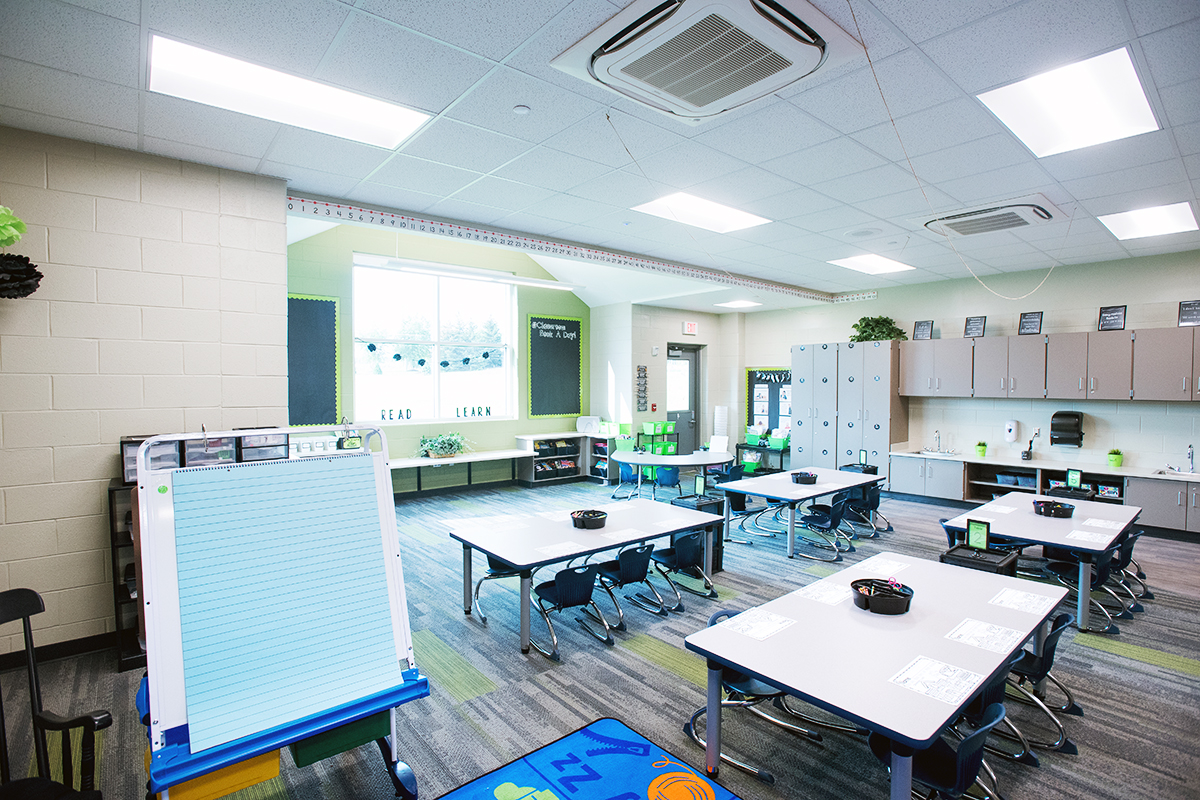Today, the world of education for students is significantly different than it was for previous generations. The skills and knowledge needed to thrive in the today’s hyper-connected and global economy require a different type of education. The tools students have readily available to communicate, socialize and gather information also require a change in the way K-12 schools provide education. To effectively deliver this new type of learning, schools should have facilities that recognize the evolving needs of students. As educators and planners accumulate more knowledge about how students learn, they can incorporate these insights into the design of school facilities.
While the design of schools may not be an answer to total transformation of the educational process, school design holds huge potential for both creating and supporting the daily habits of successful schools and student behavior. Not only are spaces potentially more inspiring and healthier to occupy, but investing in such spaces provides the messaging to kids that they matter and that facilities are being thoughtfully constructed to adequately prepare them for success.
Personalized and Flexible Spaces
Scientific studies continue to prove that people learn differently from one another— so why do many classrooms look the same? In learner-driven or personalized spaces, the facility design supports collaboration among groups of students and educators. These spaces have plenty of space for hands-on learning such as makerspaces or places for students to move around and be active. Other suggestions include:
- Flexible seating so the space can be easily reconfigured for different purposes
- Soft seating options so students can be comfortable as they investigate and learn independently
- Movable walls so teachers can create different instructional areas based on needs
Sustainability
Environmental stewardship, social consciousness, economic feasibility and schools go hand-in-hand. Green schools can be an effective way to implement cost-saving strategies that also benefit end-users. From an operations perspective, green schools can achieve indirect savings of nearly $70 per square foot. According to a report authored by the American Institute of Architects and the U.S. Green Building Council, usually $12 per square foot goes back into the school directly in the way of energy savings, lowered water costs, improved teacher retention and lowered health costs. Another major feature of green schools is the potential increase in student performance due to the abundance of daylight and openness that an eco-friendly building design may incorporate.
Technology
It is understood that flexible furniture and design can change the physical layout of a classroom for programming needs. Similarly, these elements can impact a student’s interaction with technology. Some solutions include tables with “plug and play” power and data ports, smartboards and digital whiteboards, multi-faceted outlets and TV monitors in lieu of traditional bulletin boards.
There are tens of thousands of schools across the United States. Each are in different geographical areas with different patrons and a wide range of political and economic circumstances. Thus, an emerging trend for one educational institution may be routine practice for another. However slow or fast these changes are occurring in a given area, it is evident that changes in the way education is delivered will put school design and construction on a path that will transform facilities.



